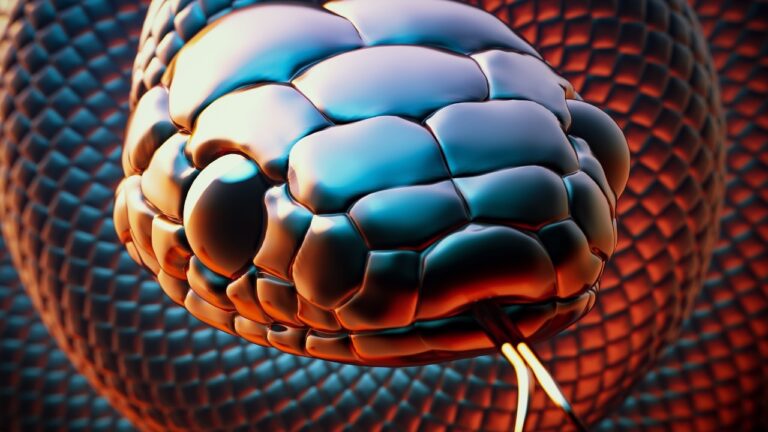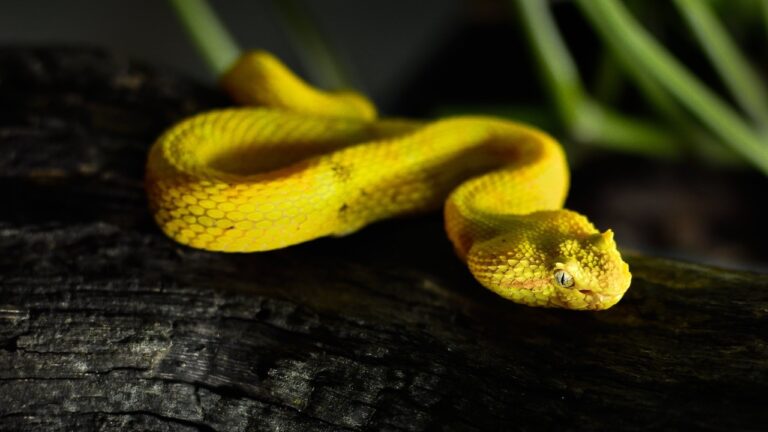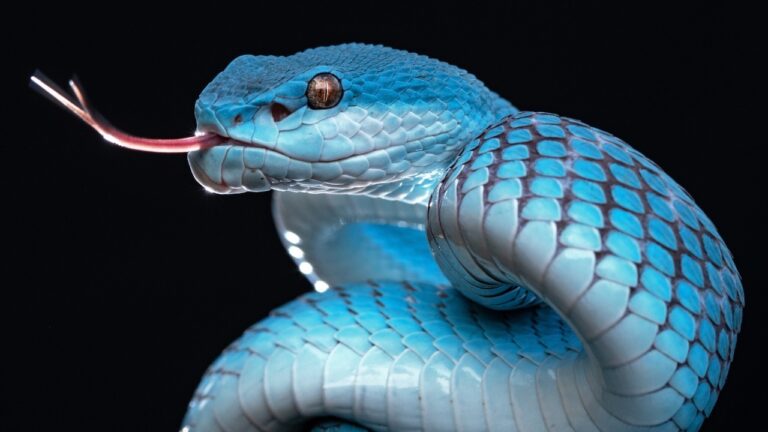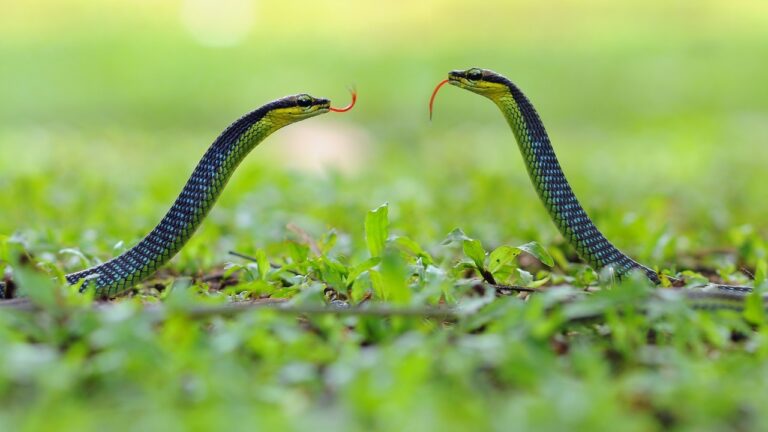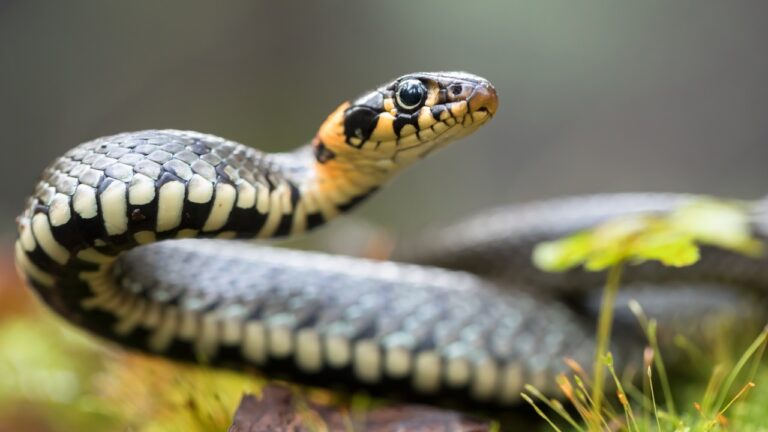Understanding the Snake Digestive System: A Guide to Snake Nutrition
Overview of the snake digestive system
The snake digestive system is a marvel of nature, finely tuned to efficiently process and extract nutrients from the prey it consumes. Snakes are known for their unique ability to swallow prey whole, thanks to their incredibly flexible jaws and expandable bodies. But what happens to the prey once it’s inside the snake’s body? How does it get broken down and transformed into energy and vital nutrients? In this article, we will delve into the intricacies of the snake digestive system and explore the fascinating journey that food takes from the snake’s mouth to its intestines.
To truly understand the snake digestive system, it’s important to have a basic knowledge of its anatomy. The snake’s digestive system consists of several key components, each playing a crucial role in the process of digestion. From the mouth and teeth, which initiate the swallowing process, to the stomach and intestines, where nutrients are absorbed, and the liver and pancreas, which produce digestive enzymes, every part of the system contributes to the snake’s ability to efficiently extract nourishment from its prey.
In the following sections, we will take a closer look at the various components of the snake digestive system and explore how they work together to ensure proper digestion and nutrition for these incredible reptiles. We will also discuss the different types of snake diets, feeding techniques, and common digestive issues that snake owners may encounter. Finally, we will provide tips on how to keep your snake’s digestive system healthy and thriving. So, let’s embark on this exciting journey and unravel the mysteries of the snake digestive system together.
Anatomy of the Snake Digestive System
When it comes to understanding the intricacies of the snake digestive system, it’s essential to delve into the fascinating world of snake anatomy. To truly grasp how these remarkable creatures process their meals, we must take a closer look at the various components that form their digestive system. From their mouth and teeth to their intestines and internal organs, each element plays a crucial role in the snake’s ability to consume and digest its prey efficiently.
Mouth and Teeth
The journey through the snake digestive system begins with its mouth and teeth. Snakes possess a unique set of specialized teeth designed to capture and immobilize their prey. Their teeth are sharp, curved, and backward-facing, preventing the prey from escaping once captured. Some venomous snakes also possess fangs, injecting venom into their prey to aid in the digestion process.
Esophagus
Once the prey is secured, it makes its way down the snake’s long and flexible esophagus. The esophagus serves as a muscular tube connecting the mouth to the stomach. Unlike humans, snakes lack the ability to chew their food, relying on their powerful muscles to push the prey down their esophagus. This process can sometimes be a remarkable sight to behold, as snakes can swallow prey much larger than their own heads!
Stomach
Upon reaching the stomach, the prey encounters a highly acidic environment. Snakes possess a stomach lined with specialized cells that secrete digestive enzymes and hydrochloric acid. This powerful combination breaks down the prey’s tissues, enabling the snake to extract vital nutrients from its meal.
Intestines
From the stomach, the partially digested prey moves into the snake’s intestines. The intestines, consisting of both the small and large intestines, play a vital role in nutrient absorption. The small intestine is responsible for absorbing the majority of nutrients, such as proteins, fats, and vitamins, while the large intestine focuses on reabsorbing water and eliminating waste.
Liver and Pancreas
Supporting the snake’s digestive system are the liver and pancreas. The liver produces bile, a substance that aids in the breakdown and absorption of fats. Meanwhile, the pancreas secretes digestive enzymes that further break down proteins, carbohydrates, and fats, ensuring optimal digestion and nutrient absorption.
Understanding the intricate anatomy of the snake digestive system provides valuable insights into the unique mechanisms that allow snakes to thrive in their natural habitats. From their specialized teeth to their powerful stomach acids, each component plays a vital role in ensuring the snake’s nutritional needs are met.
Continue reading to discover how snakes digest their food and the importance of proper nutrition in maintaining a healthy snake digestive system.
How Snakes Digest Food
Snakes are fascinating creatures with a unique digestive system that allows them to consume and process their prey. Understanding how snakes digest food is essential for snake owners to ensure the health and well-being of their slithery companions.
Swallowing Mechanism
One of the most remarkable features of a snake’s digestive system is its ability to swallow prey much larger than its head. This is made possible by the snake’s highly flexible jaw and expandable throat. When a snake is ready to feed, it opens its mouth wide and engulfs its prey, using its curved teeth to secure a firm grip. The snake then uses its powerful muscles to push the prey further into its mouth, all the way down its throat. This process, known as “ingestion,” allows the snake to consume prey that may seem impossibly large for its size.
Digestive Enzymes
Once the prey is safely inside the snake’s digestive system, the real work begins. The snake’s digestive enzymes play a crucial role in breaking down the prey and extracting essential nutrients. These enzymes, secreted by various glands in the snake’s digestive tract, start the process of chemical digestion. They break down proteins, fats, and carbohydrates into smaller molecules that can be easily absorbed by the snake’s body.
The snake’s digestive enzymes work efficiently, ensuring that the prey’s nutrients are properly broken down and made available for absorption. This enzymatic activity occurs primarily in the stomach and small intestine, where the prey is gradually transformed into a nutrient-rich slurry.
Nutrient Absorption
After the prey has been broken down into smaller molecules, the snake’s digestive system moves into the absorption phase. The inner lining of the snake’s intestines is equipped with specialized cells that absorb the nutrients from the slurry. These nutrients, including proteins, fats, vitamins, and minerals, are then transported into the snake’s bloodstream for distribution to various organs and tissues.
It is important to note that snakes have a highly efficient digestive system, as they are able to extract almost all the nutrients from their prey, leaving behind very little waste. This is because snakes have evolved to survive in environments where food can be scarce, so they make the most of every meal.
Understanding how snakes digest food is crucial for snake owners to provide their pets with proper nutrition. By replicating the natural feeding process as closely as possible, snake owners can ensure that their slithering companions receive the necessary nutrients for optimal health and well-being.
To learn more about snake nutrition and how to provide a well-balanced diet for your snake, check out our comprehensive guide on snake nutrition. It covers everything from snake diet to feeding techniques and nutritional requirements.
Snake Nutrition
When it comes to snake nutrition, it’s essential to understand the types of snake diets, prey size and frequency, feeding techniques, and nutritional requirements. Proper nutrition plays a vital role in maintaining the health and well-being of your slithery companion.
Types of Snake Diets
Snakes are carnivorous creatures, and their diets primarily consist of other animals. However, the specific types of food they consume can vary depending on the species. Some snakes are known to feed on mammals, while others prefer birds, reptiles, or amphibians. There are even species that solely survive on a diet of fish. Understanding your snake’s natural diet is crucial for providing the appropriate nutrition.
Prey Size and Frequency
In the wild, snakes have to rely on hunting for their food, and the size of their prey can vary greatly. It’s important to mimic their natural feeding habits as closely as possible in captivity. This means offering prey items that are appropriate in size for your snake. Variety is key here, as it helps ensure a balanced diet. Additionally, the frequency of feeding varies depending on the snake’s age, size, and metabolism. Juvenile snakes typically require more frequent meals compared to adult ones.
Feeding Techniques
Snakes have fascinating feeding techniques that allow them to consume their prey whole. They possess an impressive ability to dislocate their jaws, enabling them to swallow animals much larger than their head. This swallowing mechanism allows the snake to consume its prey efficiently. Once the prey is inside, the snake’s powerful muscles contract, propelling the food through its digestive system.
Nutritional Requirements
Just like any other animal, snakes have specific nutritional requirements to maintain optimal health. These requirements include a balance of proteins, fats, vitamins, and minerals. Proteins are essential for growth and muscle development, while fats provide energy and aid in overall bodily functions. Snakes also require certain vitamins and minerals to thrive. Providing a well-rounded diet that meets these nutritional needs is crucial for your snake’s well-being.
To ensure your snake gets the right balance of nutrients, it’s recommended to consult a reputable source, such as a veterinarian or a trusted snake nutrition guide. They can provide valuable insights on the specific dietary needs of your snake species and any additional supplementation that may be necessary.
Remember, a healthy snake is a happy snake. By understanding the types of snake diets, prey size and frequency, feeding techniques, and nutritional requirements, you can provide your scaly friend with the best possible diet to support their overall health and longevity.
snake diet | snake prey | snake feeding | snake nutrition | snake feeding guide
Common Digestive Issues in Snakes
Snakes, like any other living creature, can experience digestive issues from time to time. These issues can be caused by various factors such as improper nutrition, feeding techniques, or even environmental conditions. It is important for snake owners to be aware of these common digestive issues so that they can take the necessary steps to prevent and address them.
One common digestive issue in snakes is regurgitation. This occurs when a snake brings back up its food after swallowing it. Regurgitation can be caused by a number of reasons, including stress, improper handling, or feeding prey that is too large for the snake to digest. When a snake regurgitates, it not only loses the meal it just consumed but also valuable nutrients that are essential for its health. To prevent regurgitation, it is crucial to ensure that the snake is fed appropriate prey size and that it is not disturbed immediately after feeding.
Another digestive issue that snakes may experience is constipation. Just like humans, snakes can suffer from constipation when their digestive system becomes sluggish. This can be caused by a lack of hydration, inadequate dietary fiber, or even a blockage in the intestines. To help alleviate constipation in snakes, it is important to provide them with a well-balanced diet that includes a variety of foods. Additionally, ensuring that the snake has access to fresh water at all times is crucial for maintaining proper hydration and promoting regular bowel movements.
Impaction is yet another common digestive issue that snakes may encounter. This occurs when an indigestible object, such as substrate or bedding material, becomes lodged in the snake’s digestive tract, obstructing the passage of food. Impaction can lead to serious health problems if not addressed promptly. To prevent impaction, it is essential to provide a suitable substrate that is safe for the snake to ingest. Regularly monitoring the snake’s enclosure for any foreign objects and maintaining proper humidity levels can also help prevent impaction.
In order to keep your snake’s digestive system healthy, it is important to provide proper nutrition, maintain appropriate temperature and environment, ensure hydration, and schedule regular vet check-ups. A well-balanced diet that includes the appropriate combination of proteins, fats, vitamins, and minerals is crucial for the overall health and digestion of your snake. If you are unsure about the specific nutritional requirements of your snake, consulting with a reptile veterinarian or a knowledgeable snake expert can provide valuable guidance.
By understanding and addressing common digestive issues in snakes, you can help ensure the well-being and longevity of your scaly companion. Remember, a healthy digestive system is the key to a happy and thriving snake.
For more information on snake nutrition and feeding, check out our comprehensive snake nutrition guide and snake feeding schedule.
Keeping Your Snake’s Digestive System Healthy
Ensuring the optimal health of your snake’s digestive system is crucial for their overall well-being. By following a few key practices, you can help maintain their digestive health and prevent any potential issues from arising. Here are some important aspects to consider:
Providing Proper Nutrition
Feeding your snake a well-balanced diet is essential for their digestive system to function properly. Snakes are carnivorous creatures, and their diet primarily consists of other animals such as mice, rats, and birds. It is important to research the specific dietary needs of your snake species to ensure they receive the appropriate nutrients.
A varied diet is beneficial for snakes as it helps prevent nutritional deficiencies. You can offer a mix of different prey items to provide a range of nutrients. Some snakes may require additional supplementation, such as vitamins and minerals, to meet their nutritional needs. Always consult with a reptile veterinarian or a knowledgeable specialist for guidance on your snake’s specific dietary requirements.
For a comprehensive guide on snake nutrition, you can refer to our article on snake nutrition.
Temperature and Environment
Maintaining proper temperature and environmental conditions is crucial for the digestion process in snakes. Snakes are ectothermic, meaning they rely on external heat sources to regulate their body temperature.
Ensure that your snake’s enclosure provides a temperature gradient, allowing them to choose their preferred temperature. This can be achieved by incorporating a heat source, such as an under-tank heating pad or a heat lamp, along with a thermostat to regulate the temperature.
Additionally, it is important to create a comfortable and stress-free environment for your snake. A secure hiding spot and appropriate substrate, such as shredded aspen or reptile carpet, can help create a sense of security and aid in digestion.
Hydration
Proper hydration is essential for maintaining a healthy digestive system in snakes. In the wild, snakes obtain water from their prey. However, in captivity, it is important to provide a water dish in the enclosure. Ensure that the water is fresh, clean, and easily accessible to your snake.
Some snake species may benefit from an occasional humidity boost. This can be achieved by misting their enclosure with water or providing a humid hide. Adequate humidity levels help prevent dehydration and aid in shedding, which is an important aspect of maintaining a healthy digestive system.
Regular Vet Check-ups
Just like any other pet, snakes require regular veterinary check-ups to monitor their overall health and address any potential issues. A reptile veterinarian can provide valuable insights and perform necessary examinations to ensure your snake’s digestive system is functioning optimally. They can also advise on specific feeding schedules and address any concerns you may have.
Remember, prevention is key when it comes to maintaining a healthy digestive system in snakes. By providing proper nutrition, maintaining appropriate temperature and environment, ensuring hydration, and seeking regular veterinary care, you can help your snake thrive and enjoy a healthy digestive system.
For a detailed guide on feeding techniques and schedules, you can refer to our article on snake feeding guide.
Table: Common Snakes and Their Dietary Preferences
| Snake Species | Preferred Prey |
|——————-|———————–|
| Ball Python | Small to medium rats |
| Corn Snake | Mice, small rats |
| King Snake | Mice, small rats |
| Boa Constrictor | Medium to large rats |
| Green Tree Python | Birds, small mammals |
Remember to consult species-specific resources or experts to ensure you are meeting the dietary needs of your particular snake.
Conclusion
In conclusion, understanding the snake digestive system is essential for providing optimal nutrition and ensuring the overall health of your scaly companion. By delving into the intricate anatomy of the snake’s digestive system, we have gained insights into the incredible adaptations that allow them to consume and process their prey.
From their specialized mouth and teeth, designed for efficient prey capture and ingestion, to their elongated esophagus and expandable stomach, snakes have evolved a remarkable set of tools to navigate their unique dietary needs. The intricate network of intestines, liver, and pancreas work in harmony to break down the food, absorb vital nutrients, and eliminate waste efficiently.
We have also explored the fascinating process of snake digestion, from the mechanics of swallowing prey whole to the role of digestive enzymes in breaking down proteins and other nutrients. By understanding these mechanisms, we can better appreciate the intricacies of snake nutrition.
Speaking of nutrition, we have discussed the various types of snake diets and the importance of choosing appropriate prey size and frequency. Whether your snake is a carnivore, an insectivore, or an omnivore, providing a balanced diet rich in essential nutrients is crucial for their well-being. Snake diet plays a pivotal role in ensuring your snake gets the right balance of proteins, fats, vitamins, and minerals they need to thrive.
In addition to diet, we have touched upon feeding techniques and the nutritional requirements of snakes. By employing proper feeding techniques and understanding the specific nutritional needs of your snake species, you can help prevent common digestive issues such as regurgitation, constipation, and impaction.
Keeping your snake’s digestive system healthy is a responsibility that should not be taken lightly. Providing proper nutrition, maintaining appropriate temperature and environment, ensuring hydration, and scheduling regular veterinary check-ups are all essential components of a comprehensive care routine.
As you embark on your journey of snake ownership, armed with knowledge about their remarkable digestive biology, remember that snake feeding is not just about sustenance; it is an opportunity to nurture and care for these mesmerizing creatures. By understanding and meeting their unique nutritional needs, you can contribute to their long and healthy lives.
So go forth, armed with this newfound understanding of snake nutrition, and provide your slithering friend with the nourishment they require. And should you ever need guidance on snake food, snake prey, snake fat, snake vitamins, snake feeding schedule, or any other aspect of snake feeding, remember that the serpent experts at Serpent Suppers are always here to help. Happy feeding!


